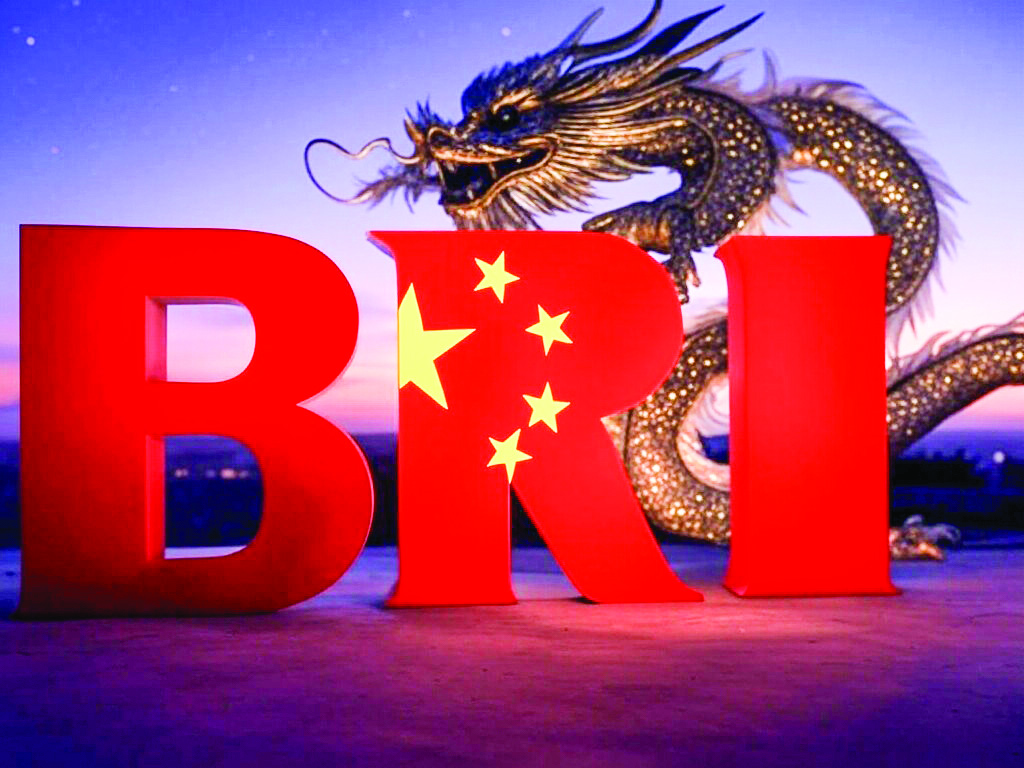The underlying strategy, critics argue, is clear: Extend credit to debt-distressed nations, knowing that repayment difficulties will compel concessions that favour Beijing’s strategic interests.
New Delhi: China’s Belt and Road Initiative (BRI) is now over a decade old. Since BRI’s inception in 2013, Beijing has pumped in $1 trillion in pledged investments. That includes $634 billion in construction contracts and $419 billion in non-financial investments, according to a 2023 report by the Green Finance & Development Center. The money, peppered across projects in as many as 140 countries, is ostensibly intended to build infrastructure that can boost a country’s trade with China.
The Dragon has worked hard to portray the initiative as one of modern history’s most ambitious connectivity projects. But portrayal and on-ground reality are different.
For many participant countries, the initiative has morphed from a path to prosperity into a web of debt, economic dependency, and strategic vulnerabilities.
MECHANICS OF DEBT TRAP DIPLOMACY
On the surface, BRI is a beacon of development for developing countries. Under this umbrella, Chinese loans finance large-scale infrastructure projects like ports, railways, highways, and energy facilities. The allure of these loans often lies in their scale and accessibility—the countries on the receiving end are often ones that are unable to secure additional funding from international organisations.
Under the surface, these loans are built on opaque agreements, high interest rates, and a lack of rigorous project feasibility assessments. The underlying strategy, critics argue, is clear: Extend credit to debt-distressed nations, knowing that repayment difficulties will compel concessions that favour Beijing’s strategic interests.
From control over critical infrastructure to enhanced geopolitical leverage, China’s gains often come at the expense of the borrower’s sovereignty.
This is the debt-trap diplomacy. And the pattern is everywhere—from Asia to Africa.
SRI LANKA, THE HAMBANTOTA LESSON
The debt-trap diplomacy thesis arose directly from Sri Lanka’s experience with the Hambantota Port. Sri Lanka’s former President, Mahinda Rajapaksa, had dreamed of transforming a small fishing town into a major shipping hub. Rajapaksa secured loans worth over $1 billion from China’s Exim Bank between 2007 and 2012 to fulfil the dream. Then came trouble.
In 2017, unable to repay Chinese loans, Colombo was forced to lease the port to a Chinese company for 99 years.
The false promise of development led to a strategic asset in the country being
This arrangement raised concerns about the erosion of economic sovereignty and the geopolitical implications of such dependency in the Indian Ocean region.
PAKISTAN’S CPEC CONUNDRUM
Islamabad, too, saw a similar result after choosing to rely on the China-Pakistan Economic Corridor (CPEC), a flagship BRI initiative.
With investments exceeding $60 billion, CPEC aimed to revolutionise Pakistan’s infrastructure and energy landscape. The power plants built using this funding generate enough electricity for Pakistan to use, and then some.
However, under CPEC, Pakistan agreed to repay Chinese state companies not only the costs of building power plants but also guaranteed dollar-based returns of up to 34%, regardless of whether the electricity was consumed, according to a Wall Street Journal report.
The deal required Pakistan to repay these debts over just a decade, saddling the country with sky-high electricity prices and a ballooning debt burden.
This model has turned surplus into a liability, with exorbitant tariffs of 13-15 cents per kilowatt-hour—nearly double the regional average. Most Pakistanis can’t afford this electricity.
The problem is not just of the energy infrastructure. The strategic Gwadar Port—once touted as a cornerstone of Pakistan’s economic revival—remains underutilised. It only serves as a symbol of Chinese influence, not a beacon of national development.
The trap works.
AFRICA: A CONTINENT IN THE CROSSHAIRS
Across Africa too, the BRI has worked well (for China).
In Kenya, the Standard Gauge Railway (SGR) project—funded by Chinese loans—was envisioned as a catalyst for regional integration. Instead, it has become a cautionary tale. With limited freight demand and operational inefficiencies, the SGR has failed to justify its $4.7 billion price tag, leaving Nairobi grappling with a mounting debt burden.
Countries like Zambia and Djibouti now face debt levels that limit their fiscal flexibility and undermine domestic priorities.
While infrastructure investments have spurred growth in select sectors, they have also skewed trade balances in China’s favour. Many African nations export raw materials while importing Chinese manufactured goods.
Beijing has managed to ensure that economic asymmetries and dependence dynamics hold up.
SOVEREIGNTY AT STAKE
The BRI is much more than a bundle of economic harm, though. It’s about access and power for China. From ports in Sri Lanka to railways in Kenya, Beijing’s control over critical infrastructure extends beyond economic transactions.
These assets can serve dual purposes, vastly advantageous for China’s aggressive military and strategic positioning, the likes of which have already been seen in the South China Sea (SCS) and the Indian Ocean. The cost of BRI participation is measured not only in dollars, but also in compromised autonomy. Following global criticism, China has eased up on this debt-trap diplomacy. But it is widely believed to be damage control and perception management, not genuine reform.
INDIA’S ALTERNATIVE VISION
As China’s BRI faces growing scrutiny, India has positioned itself as a proponent of sustainable and transparent development partnerships.
Initiatives like Security and Growth for All in the Region (SAGAR) and collaborations through the Quad showcase a genuine commitment to equitable growth.
For example, India’s SAGAR initiative has prioritised maritime security and development through partnerships such as the Mauritius Coast Guard collaboration, where India provided patrol vessels, radar systems, and training to bolster local capacities without imposing unsustainable financial burdens.
* Ashish Singh is a seasoned journalist with over 17 years of experience in defence, foreign affairs, and political reporting.

